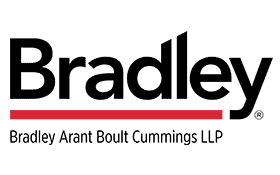Emily McCormick is Vice President of Editorial & Research for Bank Director. Emily oversees research projects, from in-depth reports to Bank Director’s annual surveys on M&A, risk, compensation, governance and technology. She also manages content for the Bank Services Program, including Bank Director’s Online Training Series. In addition to speaking and moderating discussions at Bank Director’s in-person and virtual events, Emily writes and edits for Bank Director magazine, BankDirector.com and Bank Director’s weekly newsletter, The Slant. She started her career in the circulation department at the Knoxville News-Sentinel and graduated summa cum laude from The University of Tennessee with a bachelor’s degree in Spanish and International Business.

2025 Governance Best Practices Survey: Diverging on Strategy
Bank Director’s annual survey focuses on how boards structure their deliberations, strengthen their composition and set strategy.
Brought to you by Bradley

Reviewing the strategic plan is an annual practice for most bank boards, according to 80% of the directors and CEOs responding to Bank Director’s 2025 Governance Best Practices Survey, sponsored by the law firm Bradley Arant Boult Cummings.
But the board’s engagement in setting their institution’s strategy varies widely — from active collaborators who drive the process and develop the plan with management (17%) to hands-off boards that are barely involved in strategic planning at all (3%). The majority (59%) say their board establishes the bank’s risk appetite, offering operational guardrails for the bank’s executives, but leave the management team to develop a plan that will meet directors’ approval.
There’s room for many boards to be more involved: 39% of survey participants believe directors could better contribute to setting the strategic direction of the bank.
Senior management will execute on the bank’s strategy. But the board has an important oversight responsibility to hold management accountable, and directors can play a significant role in offering feedback, says Robert Maddox, a partner at Bradley. Directors “want to be collaborative up front as to priorities and allocation of limited resources,” he says. “How that actually happens, that’s up to senior management to work out.”
Boards should avoid becoming a rubber stamp, especially when it comes to risk oversight. “You’re supposed to be an active director who provides direction and guidance,” says Maddox. Board members should ask questions when executives want to loosen risk limits in pursuit of growth — something that can have a negative effect in a downturn. As a director, he says, “I want to be able to see more and more information with regard to where our risk tolerances are, especially in this environment.”
Being active players in the bank’s strategy requires an engaged board with an array of skills and backgrounds. The majority report their boards are steeped in expertise in finance/accounting (92%), audit (84%), real estate (72%), legal (68%) and risk (62%). And despite recent backlash on diversity programs, almost half say their board has three or more members who represent diverse attributes, based on race, ethnicity or gender, consistent with last year’s survey. Forty percent say their board specifically considers race, ethnicity, gender or LGBTQ+ status in addition to skills and expertise when evaluating director candidates — a practice more prevalent at banks exceeding $1 billion in assets.
“Is it good to have people from different walks of life, from different backgrounds? Absolutely,” says Maddox. “I think we’ll continue to see diversity on our boards. I think that’s healthy.”
Key Findings
Setting Expectations
While it’s common for boards to outline expectations for members to attend board meetings (95%), participate in training and education (85%), prepare for meetings (81%) and respectfully interact with their colleagues in the boardroom (81%), few respondents say their board sets standards for engaging with regulators (36%), shareholders (35%), employees (27%) or clients (20%).
Virtual Deliberations
Almost three-quarters say their full board meets monthly, and the majority (85%) say their board allows virtual attendance for board and committee meetings. Those meetings tend to span a median four hours.
Lengthy Board Packets
Sixty-one percent receive board materials more than four days ahead of the board meeting and typically spend a median four hours reviewing that information. Board packets span a median of 200 pages overall per meeting, ranging from 75 pages at institutions under $250 million in assets and up to a median 400 pages for banks above $10 billion.
Leading the Board
Most respondents (60%) say their board is led by an independent chair. While board members overall rate the chair’s performance highly, they do indicate areas for improvement. Thirty-seven percent rate their chair as “somewhat effective” — and 8% as “somewhat ineffective” — in facilitating active board discussions. When asking about taking an active role in setting the board agenda, 46% rate the chair as somewhat effective, and 6% as somewhat ineffective. Forty percent say the chair or lead director actively engages directors who don’t frequently speak up.
New Perspectives
Fifty-seven percent say their board discusses refreshment annually, and the survey indicates that boards are regularly adding new members: 54% say one or two new directors have joined their board since January 2022. Just 18% say no new directors have joined the board in that time.
To view the high-level findings, click here.
Bank Services members can click below to access the complete results, broken out by asset category and other relevant attributes. To find out how your bank can gain access to this exclusive report, contact [email protected].
-
Bank Services Exclusive ResultsSign In To Download



